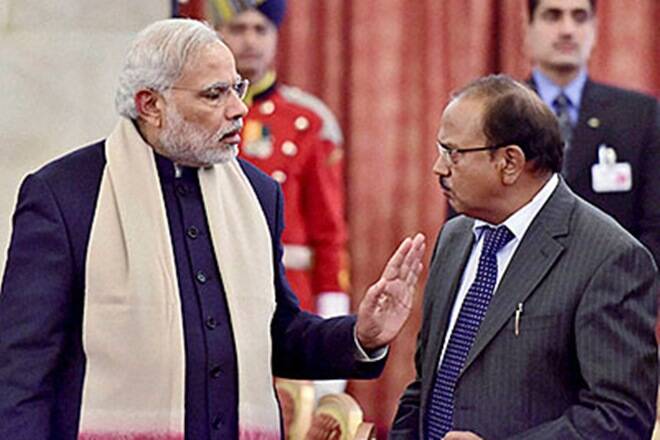In addition to land, sea, air, and space, cyber is frequently referred to as the fifth dimension of combat. It looks like cyber warfare will become a regular element of a nation’s arsenal in the near future.
Despite the fact that India is third in the world in terms of internet users behind the United States and China, its cybersecurity infrastructure is still in its infancy.
The necessity to elevate cyber commands reflects a shift in strategy as well as establishing deterrence in cyberspace, according to shifting military doctrines throughout the world.
Cyber Warfares and India :-

About:
- It is the intentional use of computer technology to disrupt a state’s or organization’s activity; it is the purposeful attack on information systems for strategic or military goals.
- Cyber warfare often include the employment of unlawful internet exploitation tactics, computer network and software damage or disruption, hacking, computer forensics, and espionage.
Arguments in Favour of Cyber Warfares:
- Cyberwarfare is a safer and more flexible strategic alternative, one important step between sanctions and bombs, when used responsibly and with sufficient safeguards.
- Cyberwars might be considered as a chance to reduce global violence and move wars’ focus away from human losses.
- Minimizes Human-Life Loss: Reducing human-life loss is one of the key concepts of two ethics of war.
Prevents Physical Territorial Invasions:
- Fighting in cyberspace provides a once-in-a-lifetime opportunity: the continuation of politics through other methods, without the need for a physical invasion of a sovereign nation.
Arguments Against Cyber Warfares:
Threat to International Security:
- Cyber warfare attacks on military infrastructure, government and private communications networks, and financial markets are posing a rapidly expanding but little understood danger to international security, with the potential to become a decisive weapon in future state confrontations.
More Number of Countries to Engage in Wars:
- The size of a country will no longer matter if cybertechnology becomes a major factor in national defence strategy.
- • Smaller countries empowered by cybertechnology will be able to wreak as much harm as larger governments like the United States, Russia, India, or China.
Lowering Threshold of Entry into War:
- Weapons in the twenty-first century will just be a cyber button on the desk of the nation’s military/government leader.
- • Land, population, and GDP will have no bearing on war-making capability or deterrent.
More Frequent Conflicts:
- As cyber warfare becomes more common, each country will need to be better prepared for bilateral battles focused on cyber warfare rather than multilateral acts of conventional warfare or relying on military blocs for mobilisation.
Threats to India:
Past Experiences:
- India has been the target of several cyber-attacks in the past.
- • In 2009, the Tibetan government in exile in India, as well as various Indian embassies, were discovered to be targets of a suspected electronic espionage network known as GhostNet. A Chinese state-sponsored gang is also suspected of being behind the power outage in Mumbai in 2020.
Threats from China:
- Targeted cyber assaults from unfriendly nation states pose the greatest threat to India.
- • Countries like China can use their vast resources to launch sophisticated cyber strikes.
Lack of Cyberspace Infrastructure:
- India is one of the few countries that currently lacks a specific cyber component in its armed forces.
- • The establishment of a Defense Cyber Agency was announced, but it was simply a half-hearted gesture, typifying India’s lack of strategic planning.
Way Forward :-
Bringing Changes to the National Security Policy:

Clarifying the Objectives:
- The National Security Policy of the twenty-first century must identify what assets must be protected, as well as the identity of adversaries who want to overawe the population of a target nation by making unusual manoeuvres that lead people to become confused.
Setting Priorities:
- Novel departments will be required to support numerous frontiers of research and technologies, including hydrogen fuel cells, seawater desalination, thorium for nuclear technology, anti-computer viruses, and new immunity-creating drugs, to name a few.
- • This new focus on a new goal will necessitate obligatory science and mathematics education, as well as public awareness of and readiness for new remote-controlled military equipment.
Changing the Strategy:
- The new national security policy’s objective will be to anticipate opponents in a variety of ways, including by launching demonstrative but limited pre-emptive attacks and building an adversary deterrent campaign.
- • For India, the new danger will be China’s cyber capacity, for which it would need to design a new strategy.
New Agenda:
- Critical and emerging technologies, connectivity and infrastructure, cyber security, and marine security will be on the new strategy’s agenda.
Role of Policy Makers:
- A separate budget should be set up for cybersecurity by the government.
- Forming a centralised corps of cyber warriors to combat state-sponsored hacking
- • India’s software development talent should be tapped by giving job opportunities.
- · Using federal funds to help states start up their cybersecurity capacity programmes.
Defence, Deterrence and Exploitation:
These are the three major components of any national cyber-threat plan.
- Critical cyber infrastructure must be protected, and individual ministries and private businesses must establish protocols for reporting breaches honestly.
- Cyberspace deterrence is an extremely complicated subject. Nuclear deterrence works because opponents’ capabilities are well understood, whereas cyber warfare lacks this clarity.
- Making use of cyberspace to achieve national security goals. The Indian military will have to begin preparing for this by gathering intelligence, analysing targets, and developing particular tools for cyber strikes.
Conclusion :-
- Land area or GDP size become meaningless if cybertechnology becomes a crucial determinant in a nation’s defence strategies. To strengthen India’s cybersecurity position, a clearer approach and greater openness are required.
- A clear public posture on cyber defence and combat increases citizen confidence, helps allies develop trust, and clearly signals intent to prospective enemies, resulting in a more stable and secure cyber environment.
